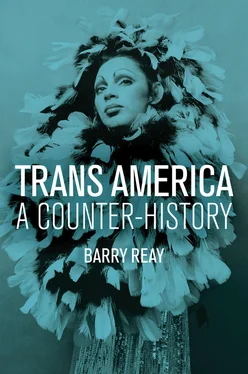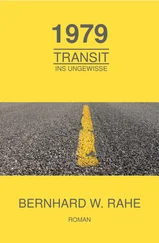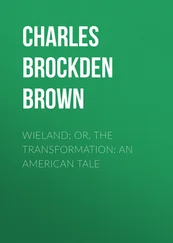The category transgender includes people who want to create and/ or retain characteristics of both genders and who see themselves as neither or both male and female; significantly, other pieces by Bolin in the 1990s argued for far more gender flexibility. 15The most recent large-scale survey of transgender people has discovered a vast range of different self-identity descriptions among those in the survey who classified themselves as ‘other’ or ‘transgender’, the more common self-descriptions including genderqueer, androgyne, and bi-gender. 16 Trans/Portraits (2015), which contains short testimonies of the experiences of a spectrum of American trans individuals, includes an array of trans masculinities and femininities, as well as those who identify as nonbinary, agender, and gender queer. 17Dakota, who was agender, said that they were ‘a sort of subset of genderqueer, in that I feel like I don’t really have a gender at all. I don’t feel male or female. I have elements of both sexes, or maybe neither.’ 18In short, there is a new awareness of the ‘diversity of transgender experience’. 19
We are now past the moment when the inaugural 2014 issue of the new academic journal TSQ: Transgender Studies Quarterly , itself indicative of the shift, could refer to the ‘postposttranssexual’. 20It is the era of trans*. 21Transgender is considered too limiting, still connoting a gender binary. The asterisk in trans* indicates more openness, ‘greater inclusivity of new gender identities [though even the notion of identity may be too restrictive as we will see later in this book] and expressions … such as gender queer, neutrios, intersex, agender, two-spirit, cross-dresser, and genderfluid’. 22Aren Z. Aizura opts for ‘gender nonconforming’. 23More crucially, these terms do not necessarily reflect those used by trans people to describe themselves. They have often seen no ambiguity: that is an outsider perspective. Or they have embraced their blurring of conventional gender boundaries – for example, those who use the pronoun ‘they’ instead of ‘she’ or ‘he’. Nonbinary has become a new category. 24CN Lester prefers to be referred to as ‘they’; and considers themself as ‘outside of the gender binary’, neither a man nor a woman. 25 Aperture magazine’s 2017 visual homage to ‘Future Gender’ stresses gender as ‘a playground’. 26The androgynous, genderfluid bodies of Ethan James Green’s photographic portfolio Young New York (2019) capture the current moment perfectly. 27
‘Today trans is everywhere’, wrote Jacqueline Rose in 2016. 28There are trans-themed television series: Netflix’s Orange Is the New Black (2013–19), Amazon Studios’ Transparent (2014–17), and Pose (2018– ), the last with significant trans participation in acting, directing, and the whole creative process. 29There is an interest in transgender children that ranges from the ‘superficially positive’ to the downright hostile. 30There is a developing trans fiction, aimed at young adults, clearly intended to educate non-trans readers and to support a trans audience. 31There are trans celebrities: the very white Caitlyn Jenner of I Am Cait (2015–16) and Vanity Fair (2015) fame, and the black trans woman Janet Mock, with her best-selling memoirs and progressive advice about trans sex work and men who are attracted to trans women. 32Trans women counsel non-trans women on their makeovers, reality television style. 33YouTube has cleverly crafted – if highly idealized – visual records of trans self-fashioning, charting the respective effects of testosterone and oestrogen on trans man masculinity and trans woman femininity. 34And the website has its own trans celebrities: Giselle Gigi Lazzarato, for example, with her 2.7 million YouTube subscribers. 35
There is a comprehensive, trans, self-help guide, Trans Bodies, Trans Selves (New York, 2014), the trans equivalent to the iconic feminist text Our Bodies Ourselves . 36There is a lavishly illustrated, colour-pictured guide to gender affirmation surgery, which does not spare the reader the lows as well as the highs of vaginoplasty and phalloplasty, and may not prove to be the best publicity for such procedures. 37There are medical guides to assist health-care professionals in their treatment of trans patients, which, in contrast to earlier doctor–patient interactions (as we will learn), stress ‘a therapeutic physician–patient alliance’. 38Such humane principles have been comprehensively enshrined in the ‘Standards of Care for the Health of Transsexual, Transgender, and Gender-Nonconforming People, Version 7’ (2011), with its proclamation that being trans ‘is a matter of diversity, not pathology’, and in the World Professional Association for Transgender Health declaration (2018) that ‘opposes all medical requirements that act as barriers to those wishing to change legal sex or gender markers on documents’. 39
There are foundational Transgender Studies Readers , representing both Transgender Studies 1.0 and Transgender Studies 2.0. 40There is a new transgender studies textbook, written by a nonbinary trans academic, intended for use by high-school and college students, and with significant input from trans contributors, including a section in each chapter called ‘writings from the community’. 41There is an anthology of trans poetry and poetics: ‘Strange that you’d let me / give birth to my own body / even though I know I’ve always been / a boy, moving / toward what? Manhood?’ 42There are trans archives. The Transgender Archives at the University of Victoria, in Canada, is a relatively new archive (2011), formed out of the collection of Rikki Swan and the papers of Reed Erickson. 43Cyberspace provides the scope for ‘transgender history to be provoked, recorded, disseminated, accessed, and preserved in ways untethered from traditional, offline, and analog practices of history’; the curated Digital Transgender Archive is a most impressive demonstration of that very potential. 44The Tretter Transgender Oral History Project of the University of Minnesota provides nearly 200 moving-image oral histories online. 45There is a growing portfolio of trans photography: most recently, Zackary Drucker and Rhys Ernst’s moving catalogue of a trans/trans relationship, and Mark Seliger’s beautiful images of trans masculinity and femininity, and those in-between – ‘endless possibilities of potential selves’, in Janet Mock’s words. 46 Vice.Comhas set up the online Gender Spectrum Collection, providing free stock photographs of trans and nonbinary models (taken by Drucker) to increase the visual presence and enhance the media representation of those ‘beyond the binary’. 47See Illustration 1. Although it has just stopped publication, for ten years trans men had their own, genuinely innovative, magazine, Original Plumbing , edited by Amos Mac and Rocco Kayiatos, which, both visually and in prose, shows the sheer range and vibrancy of trans male culture. 48See Illustration 2.

1 A transmasculine doctor in front of his computer.
Hence, it has become possible to ask, ‘Is Pop Culture having a Trans Moment?’ 49 Time magazine cover stories can proclaim a ‘Transgender Tipping Point’ (with the black, trans woman Laverne Cox on its cover) and ‘Beyond He or She’. 50The National Geographic , no less, has had a special edition on ‘The Shifting Landscape of Gender’. 51
I will be using the literature of psychology, psychiatry, and modern surgery among my source material. But that does not mean that I have been captured by what is usually called the medical model, where trans is viewed through the lenses of the medical and psychiatric experts, the gatekeepers of transition. Some trans advocates, as we will see, are deeply suspicious of such influences; others have opted to work strategically within the system. 52The trans community has long been divided on such issues. 53On the one hand, the medical model provides (some) access to health care and (as a legitimizer) to legal advocacy, even if many of those involved do not really believe in the paradigm. On the other hand, it is resisted because it not only pathologizes but also privileges a particular kind of transgender, excluding more flexible forms of transness as well as those (the majority) precluded by poverty. 54As Riki Lane expresses it, the ‘tension between seeking approval for treatment and resisting pathologization is a defining characteristic of the relationship between clinicians and TGD [trans and gender-diverse] people, both as individuals and as a social movement’. 55
Читать дальше












